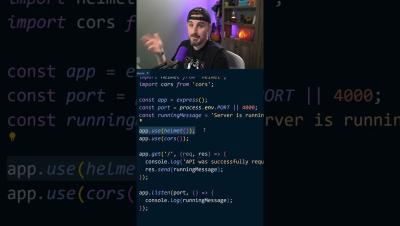Security | Threat Detection | Cyberattacks | DevSecOps | Compliance
NodeJS
The mysterious supply chain concern of string-width-cjs npm package
This story starts when Sébastien Lorber, maintainer of Docusaurus, the React-based open-source documentation project, notices a Pull Request change to the package manifest. Here’s the change proposed to the popular cliui npm package: Specifically, drawing our attention to the npm dependencies change that use an unfamiliar syntax: Most developers would expect to see a semver version range in the value of a package or perhaps a Git or file-based URL.
How to prevent log injection vulnerability in JavaScript and Node.js applications
In many standard enterprise applications, consistent logging serves a multitude of purposes. It helps businesses identify and rectify errors, provides valuable analytical insights, and lets you test new solutions. However, this also makes log injections one of the most common ways hackers can hijack or even gain access to sensitive user information.
A Developer's Tutorial to Using NPM Audit for Dependency Scanning
Many developers overlook the risks lurking in third-party packages. Every package you add could harbor vulnerabilities, potentially exposing sensitive user data and granting unauthorized access to your systems. It can lead to severe consequences, including data breaches, system compromises, reputation damage, and disruption of your services. With 80% of projects using at least one vulnerable package – it’s a crucial issue.
How to See Differences in Your Node.js Docker Container
Watch the full video for more...
How to Check Node.js Docker Image Version You're Using
Watch the full video for more...
How to Open a Shell in a Node.js Docker Container
Watch the full video for more...
Essential Node.js backend examples for developers in 2024
Node.js backend development continues to stand out in 2024 as a powerful and flexible runtime for building scalable and efficient applications, even more so with the rise of other runtimes such as Bun.
Using a Firewall to Prevent SSRF in Node.js
Watch the full video for more... About Snyk Snyk helps you find and fix vulnerabilities in your code, open-source dependencies, containers, infrastructure-as-code, software pipelines, IDEs, and more! Move fast, stay secure.
How to Make Sure Your JavaScript and Node.js Dependencies are Updated
Watch the full video for more... About Snyk Snyk helps you find and fix vulnerabilities in your code, open-source dependencies, containers, infrastructure-as-code, software pipelines, IDEs, and more! Move fast, stay secure.











